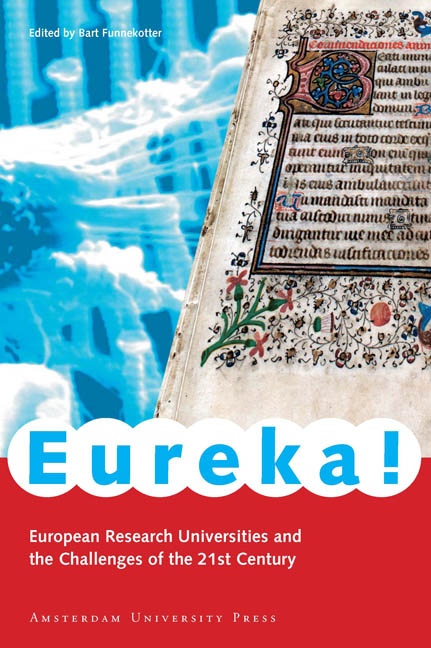Book contents
- Frontmatter
- Contents
- Foreword
- Introduction: Challenges of the Twenty-first Century
- Cambridge: Cambridge University
- Edinburgh: University of Edinburg
- Geneva: Université de Genève
- Heidelberg: Ruprecht-Karls-Universität
- Helsinki: Helsingin Yliopisto
- Leiden: Universiteit Leiden
- Louvain: Katholieke Universiteit Leuven
- Milan: Università Degli Studi Di Milano
- Munich: Ludwig-Maximilians-Universität
- Oxford: Oxford University
- Stockholm: Karolinska Institutet
- Strasbourg: Université Louis Pasteur
Leiden: Universiteit Leiden
Published online by Cambridge University Press: 23 January 2021
- Frontmatter
- Contents
- Foreword
- Introduction: Challenges of the Twenty-first Century
- Cambridge: Cambridge University
- Edinburgh: University of Edinburg
- Geneva: Université de Genève
- Heidelberg: Ruprecht-Karls-Universität
- Helsinki: Helsingin Yliopisto
- Leiden: Universiteit Leiden
- Louvain: Katholieke Universiteit Leuven
- Milan: Università Degli Studi Di Milano
- Munich: Ludwig-Maximilians-Universität
- Oxford: Oxford University
- Stockholm: Karolinska Institutet
- Strasbourg: Université Louis Pasteur
Summary
Leiden University in facts and figures:
Founded in 1575
17,250 students
4,156 staff
Budget € 415 million
Praesidium Libertatis – Bastion of Liberty: this is the motto of Leiden University and it refers not only to the university's aim, to be a bastion of scientific liberty, but also to its history as the Netherlands’ oldest institute of higher learning. The university's foundation was a direct result of the 1568 uprising in the Netherlands against the Spanish King Philips II. When the Spaniards laid siege to the city twice in 1573, it seemed that the imminent threat of starvation would force its mayor and city councillors to capitulate. However, the city fathers were steadfast and on October 3 1574, Leiden was liberated by insurgents known as Watergeuzen, who destroyed the surrounding dyke works. To reward the bravery of the heroes of Leiden, William of Orange, leader of the revolt and an ancestor of the present Queen Beatrix, presented the city with its own university.
430 Years later, the university is omnipresent in the city of Leiden. A walk along the Rapenburg, the city's most famous canal, leads one past the Academiegebouw, or Academy Building, where inaugural lectures are delivered, doctorates conferred and other ceremonial activities held. Across the canal in the building previously occupied by the university library are the central university offices. Further along is the stately facade of the Kamerlingh Onnes Laboratory. One hundred ears ago Kamerlingh Onnes created the world's coldest room here: he was the first scientist to transform helium into a liquid at - 269°C, an achievement which earned him a Nobel Prize and the nickname ‘Monsieur Zéro Absolu’. Today the building houses the law faculty. Besides the faculty buildings there is also plenty of student accommodation, the residents of which can often be found outdoors on a summer evening, sitting on benches with a case of beer or a bottle of cool wine.
Leiden University may be known as a classical, even somewhat conservative university, but in 2005 it is thoroughly modern. The huge Bio Science Park on the city's outskirts is an example of this. Built fifteen years ago, it is now the largest of its kind in the Netherlands and houses tens of bio-businesses as well as the Faculty of Mathematics and Natural Sciences and the Leiden University Medical Centre.
- Type
- Chapter
- Information
- Eureka!European Research Universities and the Challenges of the 21st Century, pp. 75 - 88Publisher: Amsterdam University PressPrint publication year: 2005



